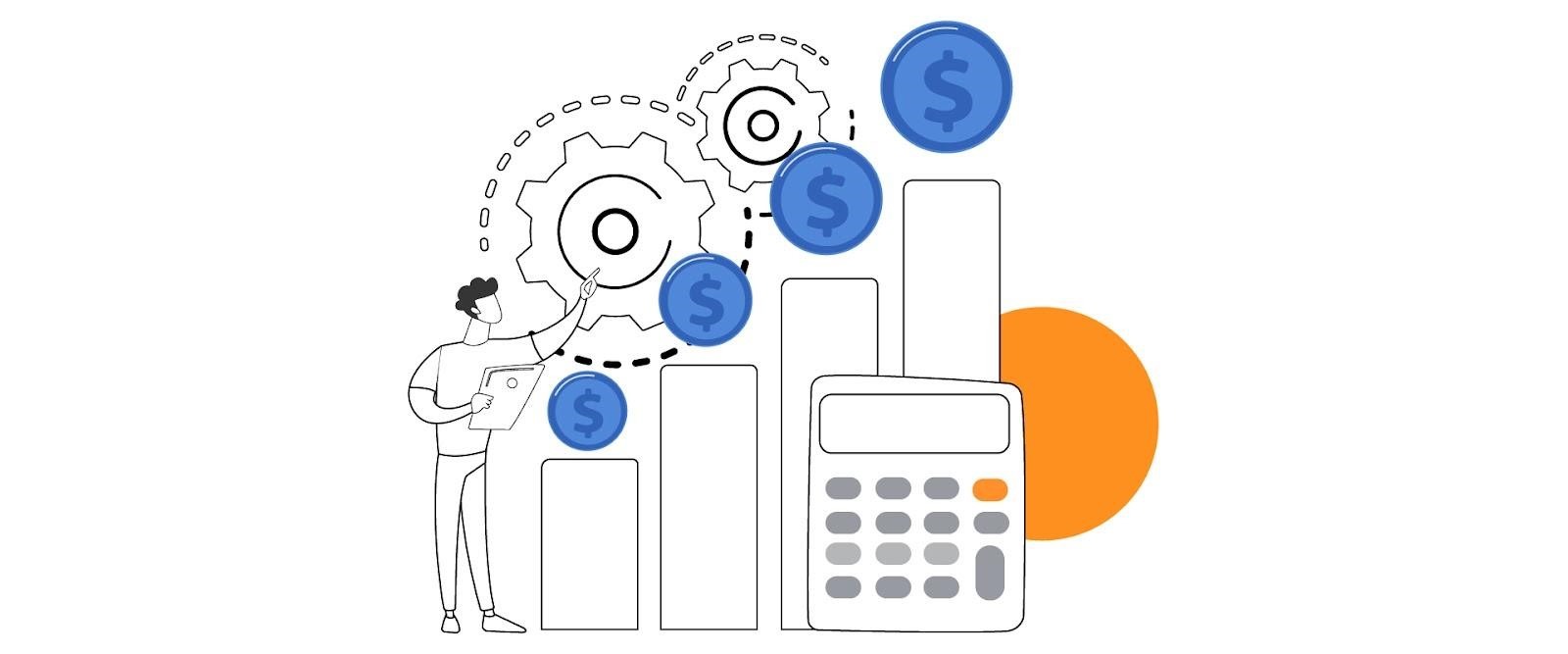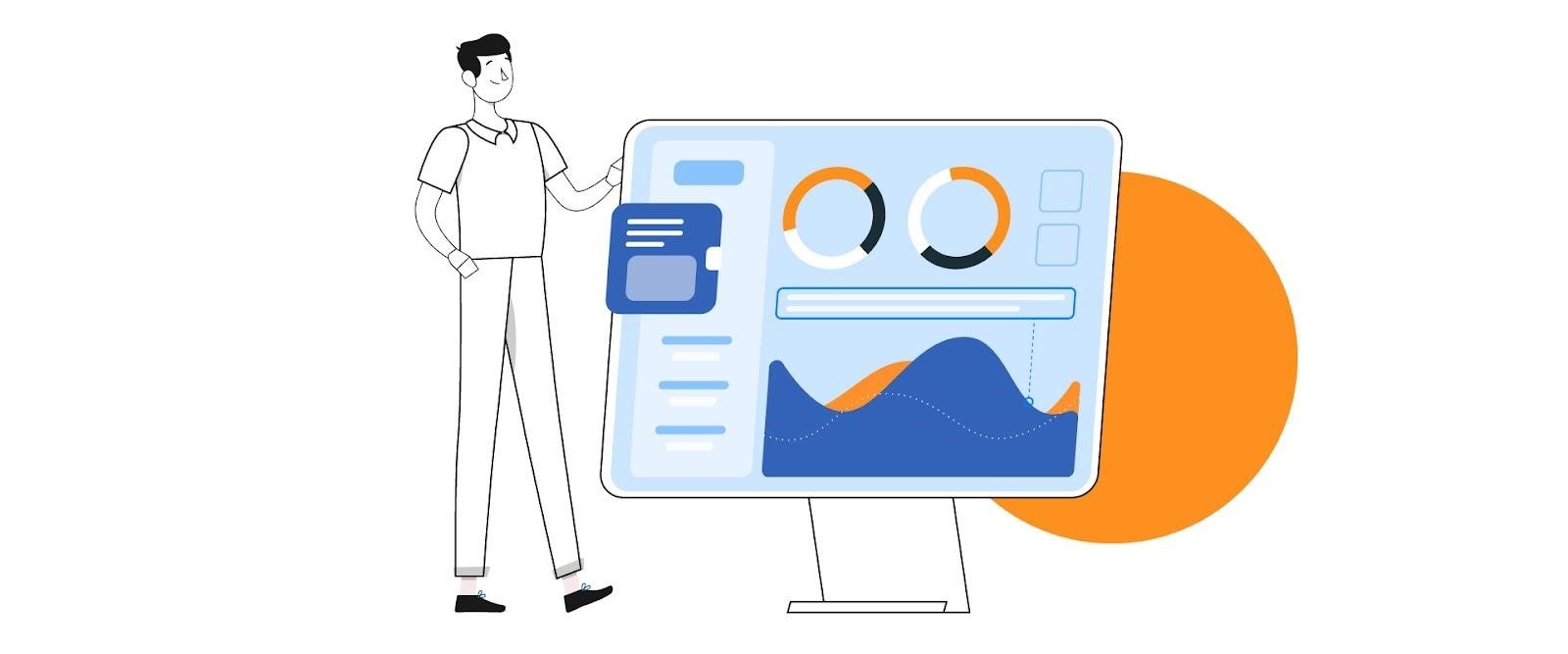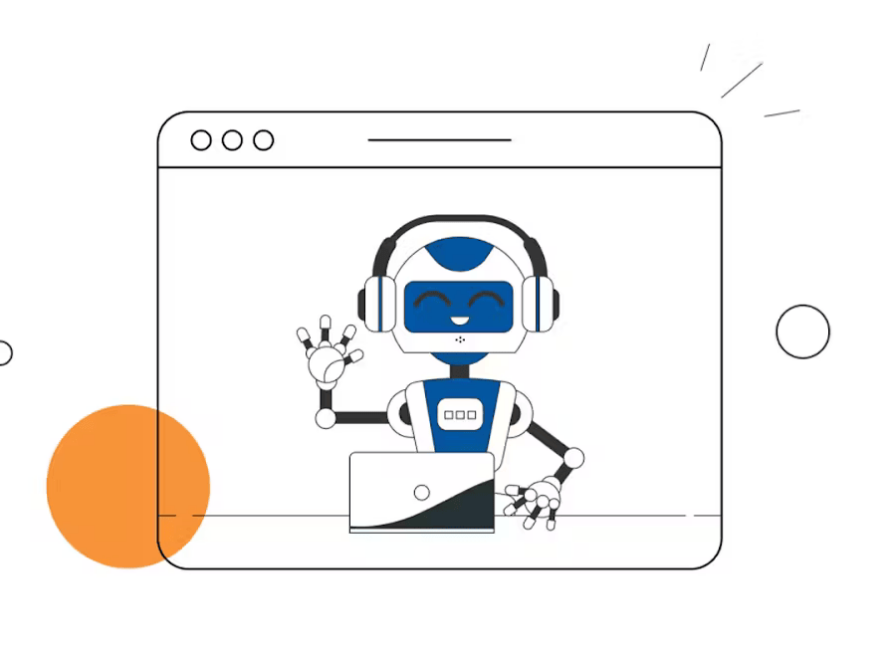According to Statasia, 59 percent of global web traffic in the second quarter of 2022 was via mobile devices. There are over 7.1 Billion mobile users in the world, and we’re willing to bet most of them use mobile apps on their devices. Looking at these statistics, it makes sense to want in on the action. The global mobile app industry was worth $208.5 billion in 2022, and is projected to increase to $777.4 billion by 2032.
But your app can only make you money if it performs well. No one will want to advertise on an inefficient app, and no one is going to subscribe to the paid version of an app that keeps lagging or isn’t easy to navigate. Optimal app performance is the key to efficient monetization, customer retention, increased app downloads, good ratings on app stores, and every other metric you can think of to measure app success.
But how do you ensure optimal app performance? What signs can you look out for to diagnose issues before your app reputation tanks and you start losing users? This article will cover just that. Keep reading, and we’ll walk you through the most important mobile app performance metrics to measure, as well as why it’s important in the first place.
Why Do You Need to Track App Performance Metrics?
We just covered this in the introduction, but it’s time to dive deep.
- Ensure Customer Satisfaction: One of the last things you want is for a customer to turn your app on, and get stuck on the loading screen for a few minutes. People don’t have that kind of patience for anything these days, and that certainly leaves a bad taste in their mouth. A smooth running app isn’t even about impressing your customers anymore – it is simply about meeting expectations and keeping them satisfied. Once you achieve that goal, you can move on to bigger ones, like keeping them happy.
- Retain Customers: We bet there have been times in your life when you abandoned an app and uninstalled it because it wasn’t working properly. If an app is annoying and frustrating to use, chances are people either won’t keep it in their phones or won’t use them at all. Optimal app performance is crucial for your app’s success.
- Establish Trust: People simply won’t trust a bad app with their money, or even to keep their payment information secure. Once that distrust sets in, converting free app users to paid ones can become next to impossible.
- Get More Downloads: It’s common sense – reputable apps that are known to work well will be more in demand than ones that don’t. Users leaving reviews about the problems in your app should never be front and center on app stores – but they will be if your app keeps causing problems. Anyone who finds your app on the store is already interested in downloading it. Don’t give anyone a chance to convince them otherwise.
- Decrease Your Churn Rate: Your churn rate is the rate at which you lose customers or paid app users, and it costs most organizations a lot to keep it low for their apps and platforms. The first step to decreasing your churn rate is to eliminate any problems that might pop up in your app. Once that’s done, you can focus on steps to improve.
Having an app that works isn’t anything impressive anymore, but the bare minimum most app users will expect from any reputable company.
By having a bad app or not measuring your performance metrics, you’re only hurting yourself. If you want to develop a profitable app, there needs to be a solid foundation of efficiency and app performance to support it.
Factors That Indicate Your App Is Good
We’ve talked a lot about how important it is to make sure your app is performing well and meeting goals, what does that look like? Well, there are three main factors that contribute to an app’s quality.
- No Downtime: App downtime refers to a period of time where an app’s services are unavailable for use. Any app that’s frequently down won’t be worth a user’s time, and building a loyal user base on this reputation will be next to impossible.
- No Anomalies or Irregularities: The user experience for your app needs to be the same across all devices. If app performance isn’t uniform across all devices, your retention and customer acquisition rates will suffer.
- Great Performance: Of course, simply working the way it should doesn’t make an app great. Once you can ensure app performance is where it should be, you can focus on making the app Tweaking app design, figuring out the best UI for conversions, running A/B tests to collect data to show you what your app users react best to, and so much more. If you’re actively monitoring your app performance metrics, you can ensure optimal app performance while you focus on making it great instead of “good” or “okay”.
Key App Performance Metrics to Measure
We’ve established how important it is to track app performance metrics, but the work’s not done yet. You need to sit down and decide what your goals are for your app, and then figure out what performance metrics to measure.
User Engagement Metrics:
Everyone wants their apps to be popular. Once an app hits the market, stakeholders might decide that for now, they don’t want to try monetizing their user base. This could be to avoid overwhelming internal systems, to take it one step at a time, or simply because you want to shift your app to the freemium version eventually and that can’t be done efficiently without a user base. To achieve this successfully, you’ll need to keep track of user engagement metrics like the amount of active users and how long they spend on your app.
Active Users
This indicator gauges how many distinct people actively use your app over a specified period, demonstrating its popularity and user engagement. Dips in this metric can indicate problems with app performance, engagement, or design.
Retention Rate
The retention rate reveals the percentage of users who return to your app after their initial visit. You can calculate this by dividing the app’s monthly users by its monthly installs.This metric is usually calculated weekly or monthly to record changes and is even more relevant after you execute any updates or UI changes. For example, you can see whether your new UI is working or not by calculating whether your month-to-month retention rate improves or worsens a month after your update.
Session Length
Session length is how long a user spends on your app every time they open it. Average session length can give you clear estimates on how engaging your app is, which is important data when you’re trying to monetize, get ads on your app, or simply see whether it is being used for its intended purpose or not.
Combined with things like your app usage tracking data, it can provide insight on what parts of your app need to be changed, what parts of your app aren’t easy to find, and can help you identify areas for improvement.
Screen Flow
Screen flow is tracking how users navigate your app and what paths they take after visiting a certain page. It helps you know whether users are able to find what they’re looking for on your app.
For example, if you want users to subscribe to your premium version, you need to make sure the pages where they can sign up for it are easy to find. You also need to make sure your ads aren’t so disruptive that people stop using the app altogether because of them.
Tracking user screen flow can give you the data you need to make sure you can make informed decisions about all of this and can set you up for success!
Conversion Metrics:
Conversion metrics refer to how many of your app users are converting to paying customers. There are many ways for users to “convert”, which will be mentioned below.
Google or Apple app stores provide this feature, but a lot of stakeholders need to get more involved with this metric to see what’s really going on.
The first thing to do is to define conversion itself. Is your app’s goal to sell a particular product? Then your conversion rate will be calculated by using data about the number of product purchases versus the number of people actually purchasing your product.
In-App Purchases
Getting customers to make in-app purchases is often a huge goal for mobile apps. This can be seen in a lot of popular mobile gaming apps like Call of Duty, where certain perks can only be unlocked with money.
Calculating your conversion rate for in-app purchases can tell you whether your current strategy for encouraging in-app purchases is working or not.
Looking at that data side by side with engagement metrics can paint a full picture of whether your current conversion strategy is working or not, and why.
Subscription Rate
One of the major sources of money for apps like Spotify is through app users who subscribe to their app. Subscription rate can be calculated by comparing the number of subscribers with the total number of app users. You can track conversion rates via subscription rate and look at the data in combination with other metrics to determine what factors influence subscriptions and what don’t. Once you have this data, you can improve on them for maximum revenue.
Ad Impressions
This one’s a little different. Tracking ad impressions and the number of installations from different sources can tell you how well ads are doing. This can either mean ads shown for other brands and apps inside your own, or ads of your app that are displayed on other platforms. Having this data enables you to allocate your ad budgets more efficiently and get more bang for your buck.
Technical Performance Metrics
One of the most important and obvious types of metrics to track would be technical performance metrics. You need to monitor your app performance to make sure users can use it without any issues.
Monitoring your app’s technical performance actively is important because the last thing you want is to lose out on precious revenue because your app isn’t available to clients!
Crash Rate
If your app crashes often, you need to do damage control as soon as possible. Frequent app crashes can damage your reputation and drive user acquisition costs up even after you fix them.
Crash rates are calculated by comparing data about the number of crash occurrences versus total number of sessions over a certain time period, or you can compare the number of users who experienced a crash against the total number of users.
Load Time
Load time for your apps can be recorded through Firebase Performance Monitoring and other similar tools. It’s important to know the load time on your apps because users expect fast and responsive apps, anything that takes too long to load is losing users and costing you money. No one will spend money on a slow app.
App Network Performance
The measuring and evaluation of an app’s performance in terms of network-related operations is referred to as “app network performance.” The app’s interactions with networks, such as the internet, local networks, and backend servers, are the focus of this performance component.
If an app’s network performance is low, it will be next to impossible for it to perform up to today’s standards. Referring to “Playlist” series on Netflix. Spotify managed to have song load time to be less than 200ms. At Exper Labs we follow similar SLAs for public facing APIs latency to be a few milliseconds.
App Battery Usage
Most users prefer apps that don’t consume a lot of battery power. In fact, a phone’s battery life is more important for 89% of phone users than brand, camera quality, or processor speed.
This is why developers are often focused on apps that are efficient in every aspect, from how they operate and how much energy they’re consuming on the device.
App battery usage is usually measured manually on test devices with a set of scenarios and parameters applied to them.
Mobile Marketing Metrics:

ROI (return on investment) is one of the most commonly used words when it comes to a business’s marketing efforts, but it isn’t the only statistic that matters when you’re marketing an app or digital service.
Here are some other numbers you need to keep track of to optimize your app’s conversions:
Average CAC for Mobile Apps
Average CAC or Customer Acquisition Cost refers to the money spent on marketing to your audience in total until they convert to paying users for your app.
According to Business of Apps, average CAC for most apps is around $29 per user in 2022, having increased by 60% in the last five years.
While this is a decent benchmark to aim for, you might need to do some homework for your own industry and app niche for more accurate numbers.
You can calculate CAC by dividing the total amount used on acquiring new users to the total number of users on the app. If this number goes too high, it might be a sign of deeper problems, either in the app or in your marketing.
Attribution Tracking
When it comes to app marketing, the best strategy is to figure out what works best for acquiring new customers and retaining old ones, and sticking to it. Attribution tracking involves keeping track of where most of your users are coming from, and then iterating on those ads and channels to drive more conversions.
But it’s not that simple. While you may be getting a lot of users from a mobile app, perhaps that won’t be the best option for you if none of them is spending money. You could be getting more paying users through your Instagram campaign, in which case, that should be the priority.
Don’t just focus on the numbers, but try to uncover the story these numbers are telling you before you make any assumptions based on them.
Average Revenue per User
Average revenue per user or ARPU is the total revenue generated through the app divided by the total number of users. This is a popular metric used similarly in the SaaS world as “Average Revenue per Account”, and can shed light on how profitable your app really is.
Keeping track of this number can clue you in on when it’s time to shift your monetization strategy.
Customer Lifetime Value (CLV)
This metric talks about how much money a user spends on your app throughout their lifetime, from downloading it to uninstalling the app. Many experts argue that this is one of the most important conversion metrics.
This metric is calculated by multiplying how much a user spends in a given period of time with how long you expect to stay on your app. You can get predictions for the time period each user spends on the app using historical data and analytics.
Final Thoughts

Data-driven decision making is one of the cornerstones of successful apps and businesses in today’s economy. There were over 142.6 billion app downloads from the iOS app store and 110 billion app downloads from Google Apps store. Not to mention, 5.195 million apps out there right now.
These statistics make it clear that a single user has multiple apps on their phone, has their pick from countless choices available on app stores, and doesn’t have to settle for mediocre apps.
With competition this cutthroat, you can’t rely simply on your instincts anymore – you need data to back all your decisions and pave the way for improvements. You need data and analytics to read what your users are telling you, and then act on it.
Only by tracking your apps performance through some key metrics will you be able to get this data, and the importance cannot be stressed enough at this point.



